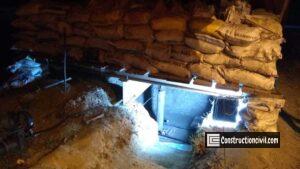Enhancement of the in-place properties of the ground/foundation strata by controlled use of techniques suited to the subsoil is known as Ground Improvement Technique. Where a project encounters unfavourable subsurface conditions, possible alternative solutions are avoiding the particular site, modifying the planned structure’s design, removing and replacing unsuitable soils, or attempting to modify the existing ground.
The necessity of Ground Improvement:
- In the case of poor and weak subsoils, the design of conventional shallow foundations for structures and equipment may show some problems concerning both sizings and foundation settlement control.
- Based on subsoil conditions obtained from the site and the loading exercised by the following IS 13094: 1992 for structure, foundation design of a structure shall be done, including the foundation size and settlement analysis. Ground improvement is necessary if the net loading intensity of the foundation exceeds the allowable pressure calculated as per IS 6403: 1981.
- Loose cohesionless sediments in seismic zones may be prone to liquefaction throughout earthquakes, especially under high water table positions. In such cases, the analysis should be continued to establish the subsoil’s liquefaction potential. Ground improvement is offered if such analysis shows that the subsoil is likely to liquefaction.
- Ground improvement is also required if the load intensity is not so high. Still, settlement exceeds the structure’s acceptance criteria from the viewpoint of distortions induced in the structure and from an operation angle.
- In the case of slope protection, ground improvement is required for soil stability by using soil reinforcement.
- The techniques for ground improvement have found large-scale applications in projects.
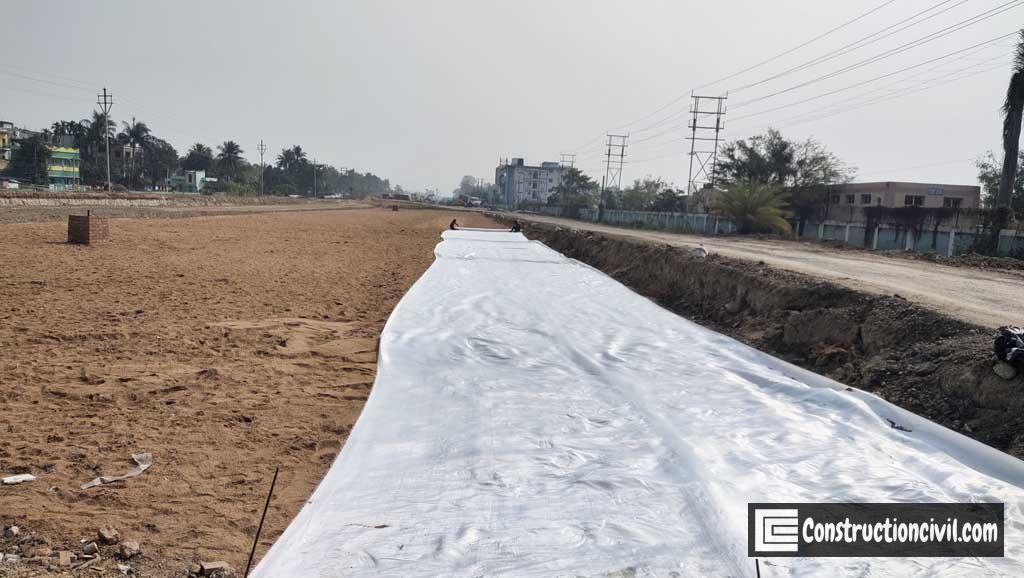
Also, Read: Ground Improvement Techniques – Vertical Drain & Stone Column
The objective of Ground Improvement:
A more viable alternative in certain situations is to improve the subsoil to an extent such that it would provide a dry and stable working area, and foundations constructed after subsoil improvement would result in settlements within acceptable limits. Apart from the above serves one or more of the following vital functions, which provide stability to the structural foundation.
- To increase the shear strength and bearing capacity of the foundation soil.
- Reduce lateral pressures on foundations or earth retaining structures.
- Reduce the compressibility of granular soils, and increase the density of foundation soils.
- Decrease foundation soil permeability by reducing poor water pressure.
- Ground improvement helps to control deformations of the foundation soil layer.
- Prevent soil particle movement by groundwater and helps to improve soil drainage.
- Accelerating the consolidation process helps to compact the foundation soil of the structure.
- Mitigate exposure to liquefaction and natural variability of borrowed materials or foundation soils.
- Help to transfer structural loads to more competent subsurface layers.
- Prevent foundation soil’s detrimental physical or chemical changes due to environmental conditions.
Necessary data for Ground Improvement:
- Subsoil profile and soil properties up to a depth near two times the loaded zone’s width or up to hard soil strata if found earlier. The information shall be collected by conducting soil investigations per the Guidelines.
- Engineering subsoil properties shall include index properties, shear parameters, compressibility properties etc.
- Boreholes shall be completed by carrying a suitable number of static/dynamic cone penetration tests up to the required depth, which will be improved. In connection with selected boreholes, these tests work as an economical and fast method of learning the state of subsoil before and after the ground improvement work.
- Information shall be obtained with respect to the nature of structure and area covered by it, intensity and nature of applied loading, and permissible distortions the structure can withstand.
Also, Read: Soil Reinforcement Methods – Advantages and limitations
Widely Used Ground Improvement Techniques:
Different types of Ground Improvement are generally used to improve the subsoil properties like shear strength, stiffness and permeability, etc., to reduce settlement of structure foundation before the start of actual construction work.
- Remove and replace method: Remove poor in-situ sub-soil and replace it with competent backfill.
- In-situ soil densification method: The following ground improvement methods like vibroflotation, Vibrocompaction, compaction piles, blasting and dynamic compaction (cohesionless) and dynamic consolidation (Cohesive) are adopted in various projects.
- Pre-compression/pre-consolidation of in-situ soil: The following methods of ground improvement like preloading with or without Vertical Drain, Sand Drain, PVD drain etc., Surcharge Fills and Electro-osmosis under Pre-compression/pre-consolidation of in-situ soil techniques.
- Injections and grouting into in-situ soil: Different types of grouting methods are available such as Particulate Grouting, Chemical Grouting, Pressure injected Lime, Displacement Grout, Electro-kinetic Injections, and Jet Grouting.
- In-situ soil reinforcement: Vibroreplacement Stone Columns, Sand Columns, Root Piles, Soil Nailing, Strips and Membranes
- Use of admixtures: Structural Fills, Mix-in-place Piles and Walls
- Thermals: Thermal techniques involves frequent heating and freezing techniques.
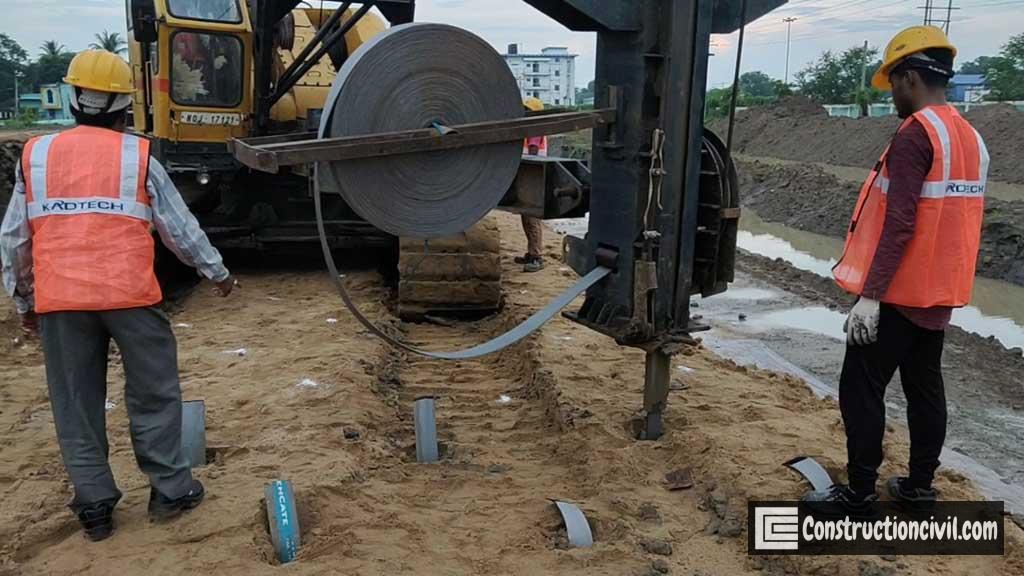
Also, Read: Vibroflotation, Blasting & Dynamic Compaction – Ground Improvement
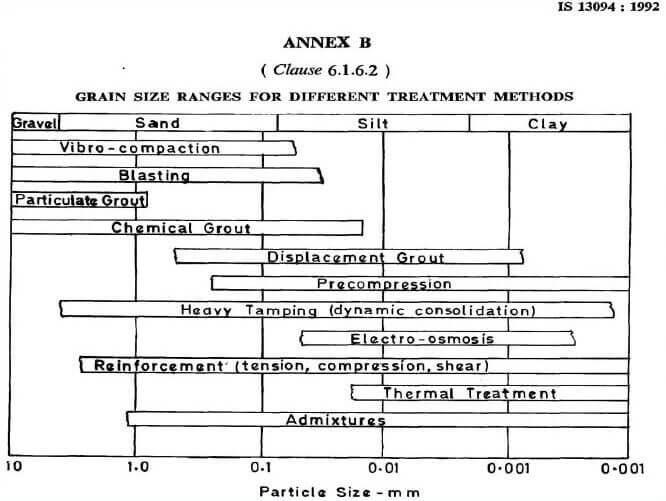
Control and monitoring:
- Before the commencement of ground improvement works, pilot boreholes with appropriate field and laboratory tests shall be done in areas that need improvement.
- After completion of ground improvement-related work in a particular zone, the field and laboratory tests shall be repeated to assess the subsoil’s degree and plenty of improvement.
- For medium to major activities, it is desirable to allocate a trial zone for learning the pattern initially, a deficiency of the ground treatment technique employed and optimization of the same.
- It will also be helpful to include a program of instrumentation to observe the behaviour of subsoil throughout loading by measurement of pore pressure, soil movements, earth pressures, foundation settlement etc.
Quality Control and Recording of data:
- A competent inspector Engineer shall be present at the site to record the necessary data during the execution of the ground improvement works.
- The engineer shall record all related data in the prescribed format, including the sequence of operation of the work, ordering and spacing of treatment points, depth of treatment, details of equipment employed and installation procedure.
- Records of instrumentation, if any, during the ground improvement work.
- Test results of soil must be recorded before and after the treatment.
- Recording of settlements carefully in case of preloading.
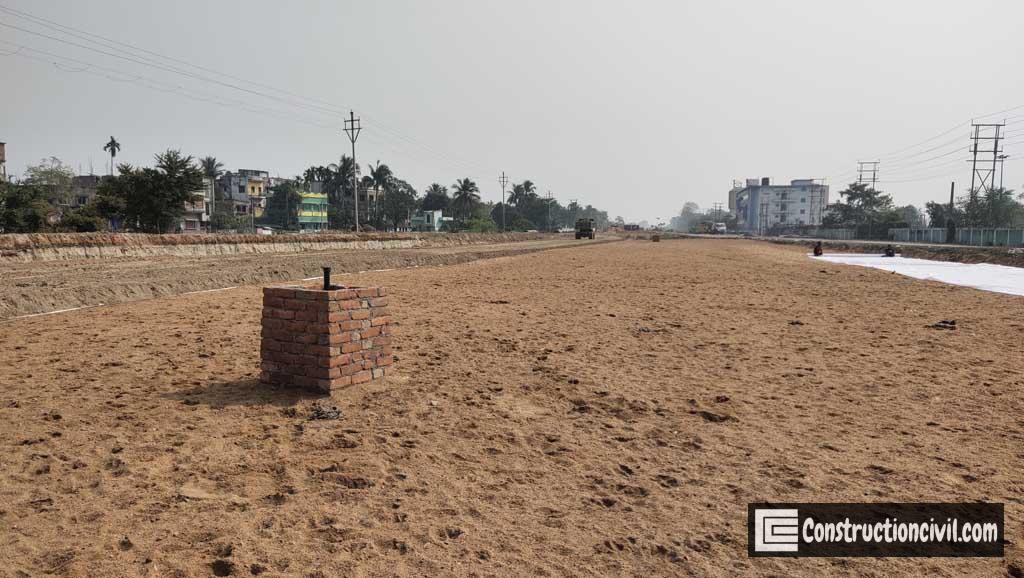
Field observations / instrumentation:
Following are the primary instruments which are required for recording data for analysis.
- Heave Stake / Pegs
- Settlement Platform / Settlement Gauges
- Piezometers
- Inclinometers
Also, Read: PVD Drain Installation for Ground Improvement
References:
- Specifications for road & bridge work, 5th revision, 2013 of MORTH by IRC: clause no. 314
- IRC:SP:13-2004: Guidelines for the design of small bridges and culverts, articles no. 22 and 23
- IS 13094: 1992 (Reaffirmed 1997): Selection of Ground Improvement Techniques For Foundation In Weak Soils – Guidelines
- IS 15284 (Part 1): 2003: Design And Construction For Ground Improvement – Guidelines, Part 1 Stone Columns
- IS 15284 (Part 2): 2004: Design And Construction For Ground Improvement – Guidelines, Part 2 Preconsolidation Using Vertical Drains




